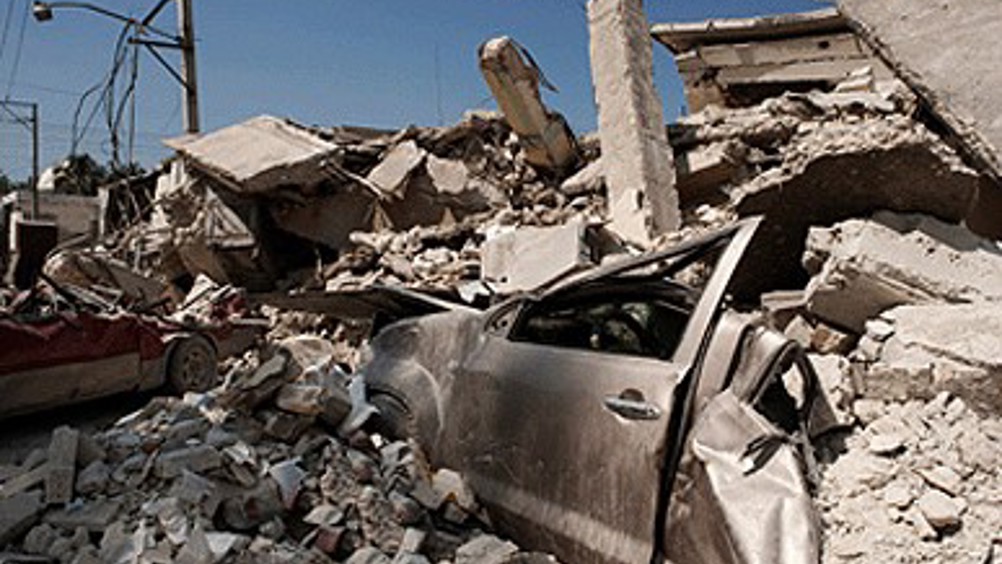Strapping secures buildings damaged by earthquakes
Buildings damaged by earthquakes could be made safe and habitable with a cheap and simple technology developed at Sheffield University.

Recent tests reportedly showed that a damaged building repaired using the technique could withstand a major earthquake similar in scale and proximity to the buildings that collapsed during the Haiti earthquake in January 2010. According to the UN Office for the Coordination of Humanitarian Affairs 145,000 people still remain homeless as a result of the disaster.
The technology involves wrapping metal straps around each floor of the building, which are then tensioned either by hand or using compressed air tools. It is designed for use on reinforced concrete frame buildings – a common construction technique around the world, including countries like Haiti. Unlike other repair methods, it does not require expensive materials or a high level of technical knowledge.
In a statement lead researcher, Prof Kypros Pilakoutas said: ‘The strapping works very much like a weight-lifter’s belt, by keeping everything tightly compressed to reduce tension on the concrete columns of the structure. Concrete works well under compression, but not when pulled under tension and this is why it has to be reinforced for use in construction. When the reinforcement is faulty or damaged, it can be very expensive to repair.
Register now to continue reading
Thanks for visiting The Engineer. You’ve now reached your monthly limit of news stories. Register for free to unlock unlimited access to all of our news coverage, as well as premium content including opinion, in-depth features and special reports.
Benefits of registering
-
In-depth insights and coverage of key emerging trends
-
Unrestricted access to special reports throughout the year
-
Daily technology news delivered straight to your inbox










UK Enters ‘Golden Age of Nuclear’
The delay (nearly 8 years) in getting approval for the Rolls-Royce SMR is most worrying. Signifies a torpid and expensive system that is quite onerous...